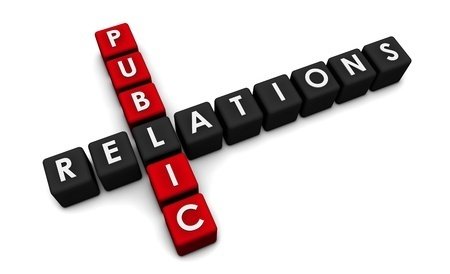Questions Every Public Relations Investment Decision-Maker Should Ask
 By Mark Weiner, CEO of PRIME Research-AmericasExecutives who invest in public relations have become much more discriminating when evaluating marketing and communications performance. But regardless of the current economy, proving the value of public relations has endured over time as one of the profession’s most vexing challenges.The difficulty in proving PR’s value is that value is a subjective measure. What is worse, values change not only from organization-to-organization but from person-to-person within the same organization. As such, the first step in delivering value in public relations is to uncover the often secret “value system” extant among the executives who are involved in planning, funding and evaluating your program.For this reason, it is wise to take a systematic approach to discovering how your clients define PR success. Structured one-on-one conversations with your clients, preferably conducted by an objective third-party, will reveal the preferences and expectations upon which you will be asked to deliver. By aggregating and analyzing individual responses you will be able to identify the central “core” measures for objectives-setting and evaluation.What follows are eleven questions your client may reasonably expect you to answer when determining the success or failure of a public relations program. Your clients may not have asked these questions yet, but if you know which questions matter and how to answer them, you are more likely to enjoy the benefits of long-lasting and profitable client relationships.
By Mark Weiner, CEO of PRIME Research-AmericasExecutives who invest in public relations have become much more discriminating when evaluating marketing and communications performance. But regardless of the current economy, proving the value of public relations has endured over time as one of the profession’s most vexing challenges.The difficulty in proving PR’s value is that value is a subjective measure. What is worse, values change not only from organization-to-organization but from person-to-person within the same organization. As such, the first step in delivering value in public relations is to uncover the often secret “value system” extant among the executives who are involved in planning, funding and evaluating your program.For this reason, it is wise to take a systematic approach to discovering how your clients define PR success. Structured one-on-one conversations with your clients, preferably conducted by an objective third-party, will reveal the preferences and expectations upon which you will be asked to deliver. By aggregating and analyzing individual responses you will be able to identify the central “core” measures for objectives-setting and evaluation.What follows are eleven questions your client may reasonably expect you to answer when determining the success or failure of a public relations program. Your clients may not have asked these questions yet, but if you know which questions matter and how to answer them, you are more likely to enjoy the benefits of long-lasting and profitable client relationships.
- Did we meet or exceed our objectives? Every PR investment decision-maker deserves to know whether the program met or beat its goal. Assuming that reasonable and measurable objectives were set at the onset, this is among the easiest performance measures to deliver.
- Did we outperform our competitors? This measure requires no particular knowledge of PR to attribute value. In a media-driven program, for example, you might consider a way to compare “share-of-voice” to “market-share:” if your share-of-voice is the greater of the two, you’ve probably generated more than your fair share versus competitors.
- Did we deliver our key messages? Did unintended messaging interfere? It’s more common to track the delivery of intended messages…but “unintended messages” (negative or off-topic themes) can neutralize or even overwhelm what’s intended. Show the full context by tracking both.

- Beyond the tone and presence of key messages, was the coverage prominent and with a high probability to be seen, read or heard? Frequency and content is important, but a great deal of value can be uncovered in the quality of coverage. The presence of brand names in the headline, visuals and the size or length of the news item all indicate an increased likelihood for awareness and recall.
- Did we reach our target audiences? PR has evolved to be highly targeted. Increasing awareness among lower-value audiences is a poor use of resources. It’s best to focus on the target audience is and the media they read, watch and listen-to. Results should reflect the extent to which the total audience was comprised of the target.
- How has the competitive landscape changed? Competitive activity can impact your results, for better or worse. As you interpret the results of your program, ask yourself the following: What PR and marketing initiatives were undertaken during the span of your campaign? Did they have an impact on your PR performance?
- What was the effect on awareness? Understanding? Behavior? It is reasonable to expect to do more than to simply drive media coverage: affecting the perceptions and attitudes of your target audience sets the stage for more meaningful business outcomes such as sales or stock price.
- Are we generating a positive return on our PR investment? Is our PR driving revenues? Leading to greater efficiency and lower cost? Avoiding costs altogether? While connecting PR to sales or stock price can be sexy, it’s difficult, But It’s reasonable to expect your PR to deliver positive results – regardless of what those results are – efficiently. Striving to generate increasingly higher levels of performance within a set budget is always desirable and recognizable as a form of positive ROI.
- Did our PR meet or exceed relative efficiency when compared to other marketing disciplines? Improved efficiency over past performance is an important gauge of continual improvement, comparing your PR’s efficiency with that of other marketing agents can provide helpful context. It’s not unusual for PR to deliver the best return-on-investment within the marketing mix but if you want to benchmark internally, it’s important to have the buy-in of others with whom you’ll be referencing (as well as the measures by which you’ll be compared).
- What worked, what didn’t and how do we improvet? Measurement should not be viewed as a scorecard but rather as a tutor: opportunities for learning and continual refinement abound. And it’s hard to imagine a CEO who wouldn’t respect the desire to learn and improve even if elements of the program under-performed.
- What do we do next? Beyond telling you what happened and how you performed, your measurement system should tell you something about what to do about it and in what sequence.
Ideally, the questions you will be expected to answer will meet three criteria. They should be reasonable, meaningful and measurable within the broader context of budget, type of campaign, duration of the campaign and more. So while generating a high volume of coverage is reasonable and measurable, most executives agree that it is not particularly meaningful. And while generating sales is extremely meaningful, it is difficult to accomplish and even harder to validate. As such, it’s not a particularly reasonable value. Typically, three or four measures will emerge as those upon which executives will agree. The most common “winners” include “delivering key messages in target media,” “raising awareness,” and “meeting or exceeding objectives.” To optimize value and reduce risk, be certain to maintain consistent and open communication with your key executives to share findings and seek agreement.Once your objectives and results are aligned with the preferences of your clients, your ability to prove the value of public relations should be greatly simplified.
To read more learn more about corporate communications research and evaluation, visit the PRIME blog at https://www.prime-research.com/
[author]About the Author: Mark Weiner is CEO of PRIME Research Americas. PRIME is among the world’s largest PR research firm with 500 analysts and consultants employed in ten service centers around the globe. Mark is the author of “Unleashing the Power of PR” published by John Wiley & Sons. To learn more about PRIME, visit www.prime-research.com for additional information. [/author]

